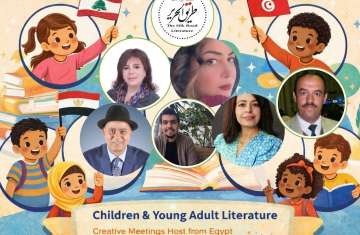How can a mother be accused of kidnapping her own children? With tearful eyes and a throbbing heart I watched “Mrs. Chatterjee vs Norway.” I was so much touched by the movie that is based on a true story not only because I am a mother but also because I lived in the west for some time and I fully understand what it means to be coming from a different cultural background and trying to be yourself. Debika is a young Indian mother who came with her husband to Norway seeking a brighter future for their kids but in no time this dream turned into an unprecedented nightmare. Her infant daughter and 3 year old son were kidnapped by force not by a gang or villains but rather by the government!
The Child Welfare Services claimed that the biological family is not suitable for bringing up the children and that foster parenting is the optimum alternative. The only crime the loving mother did was her cultural background that caused her to commit an unforgivable crime in the eyes of the government which is hand feeding her babies! In a blink of an eye the Indian parents lose custody of their own children and the mother loses her mind and heart. Overnight, the two children are not hers anymore but a “ward of the state.” The mother decided to fight to get her children back.
The question that puzzled me throughout the movie was” On what pretext did the Child Service Agency conclude that this biological family is a threat to the children? Who are they to decide what the best interest of the children is? On what criteria? What crime did a mother do to feed her baby with her hands? This is a cultural action that raised a whole nation before. A mother is free to inherit her religious beliefs to her offspring and they can later adopt or reject them. How on earth can a foster environment be as genuine as a natural family bond?
The mother, helpless and heartbroken determines to take an extra mile and kidnaps her children and tries to run away to freedom. The authorities thwarted her attempt then she decided to knock on all official doors. They pleads for her government’s help. The father is obsessed with his citizenship case. He is not as keen as her. The government smothered the mother of accusations of being mentally unstable, having a temper and depressed as if separating her from her children is not a valid reason for that and screaming their names is not the least she can do to express her anger!
A paradox lingers in the film, how can we respect diversity and claim tolerance when we refuse daily cultural differences? Diversity is not equal to child abuse. Forcing a helpless child to be separated from his biological parents for no major crime is by no means for the best interest of him/her. The Norwegian country accepts immigrants and grants citizenship to people from completely different ethnicities but at the same time wants to erase their entities. A lawyer admits” Diversity doesn’t break up our society, it enriches it.” The Indian mother, to their surprise, has a degree in science. She refutes the stereotype the social workers thought of her as a wild ignorant mother that does not use a spoon to feed her baby! When I lived in Glasgow for three years and I was surprised by its cosmopolitan community. I was stunned by the diversity and everyone was free to live according to his beliefs and style of living. Saris and Hijabs were line in line with Scottish kilts and Sikh turbans. I experienced myself how difficult it is to maintain a healthy balance between your cultural background and heritage and your new completely different community. Eating your traditional food is not breaking the community law. Scottish people loved pakoras and curry as much as Pakistanis and Indian immigrants nibbled on Scottish shortbread and porridge! Traditions and identities can be a good addition. Well educated and good behaving humans have nothing to do with how they look.
The final scene of the court hearing that took place in India after the mother successfully escalated her case is epical. Debika, the mother, states that she always did what other told her to do. She succumbed to her father’s will to study and to her mother’s dream to see her as a bride and finally to her husband’s endeavors to immigrate to Norway. However, now it is her time to stand up for her children and strife to get them back, “I’ll do what I think is right.” After 3 years of relentless fighting she wins her case. She fought for justice and she got it for “who can love more than a mother?”

Comments